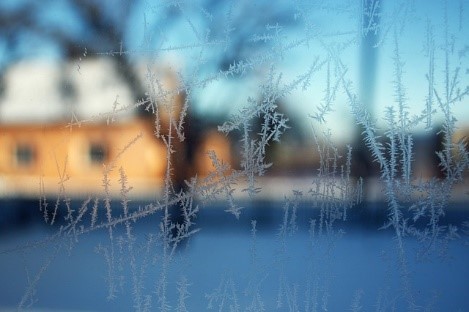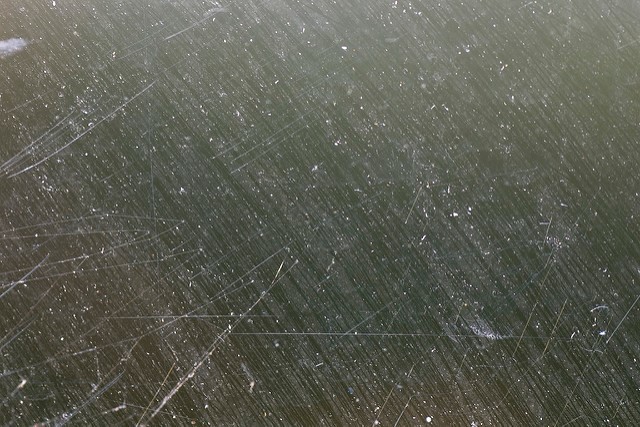
Glass is one of the most popular and adaptable building materials used by architects today. It is strong, tough, and can add aesthetic appeal to almost any structure. Glass also plays an essential role in increasing the energy efficiency in buildings, especially in the way it allows for the use of natural lighting during daylight hours, saving energy that would be wasted having to illuminate the interior.
Another great green advantage that glass can bring to any building is hugely improved solar and thermal performance. Modern glass-makers can make modifications to their products during the manufacturing process, allowing architects to plan and build structures that are more energy efficient. One of the ways that they do this is through the use of low-emissivity coatings, creating a product that is more widely known as low-e glass.
What is low-e glass?
In the most basic terms, low-e glass is glass that has been treated with a low-e coating designed to prevent heat from escaping through it, keeping the warmth inside and improving levels of energy efficiency. Low-e glass is a lot more energy efficient than regular glass used in most windows, which allows much more heat to escape to the outside.
Low-e glass can be a useful addition to structures that have many outer glass surfaces. In winter, rooms with regular glass will be more prone to losing heat when the sun goes down due to their poor insulation. With low-e glass, more heat is retained, allowing for the extended use of rooms that would be a lot colder otherwise.
Buildings that have low-e glass installed in their windows can enjoy lower energy bills. As this glass has the ability to retain more warmth, there is a reduced need to heat rooms that don’t lose as much heat through their windows, therefore lowering monthly bills. Also, through using less heating to keep a building warm, less energy is used — allowing for a greatly reduced carbon footprint.
How is low-e glass made?
Low-e glass can be classified in two ways: soft-coated and hard-coated. Both kinds of glass are made by applying an ultra-thin, transparent coating of tin oxide or silver within the layers of glass. These layers allow visible light to pass through, while reflecting less desirable infrared and ultraviolet radiation. To find the difference between hard and soft-coated low-e glass, you have to look at how it is applied to the glass.
Soft-coated
This type of coating is applied through a sputtering process that is performed after the glass has been made, and involves a thin film of silver being fired onto the surface. This kind of low-e glass is the most common, but is more prone to scratching and oxidation than hard-coated glass. Therefore, it has to be encased within an insulated glass unit for protection.
Hard-coated
With this kind of coating, a layer of tin oxide is fused with the glass when it is still hot — something that is done during the glass manufacturing process. This process creates a tougher coating that doesn’t need to be protected by a glass unit. The main drawback with this coating type is that its emissivity is not as low as low-e glass with a soft coating.
The most popular window units are double-glazed and sealed, commonly separated with a gas like argon to improve the unit’s insulation properties. The glazing is usually applied to the inner surface of one of the panes. Manufacturers need to keep the layer as thin as possible to ensure that the glass has maximum transparency.
How does low-e glass work?
To understand how low-e glass works, it is beneficial to know more about light and heat and the differences between them. Although they are both forms of energy and are both present in sunlight, they exhibit very different behaviours. Sunlight contains a large range of electromagnetic radiation that consists of vibrating waves of electricity and magnetism. Human eyes can only see a small portion of this radiation, which we call the visible spectrum — the band of light that contains red, orange, yellow, green, blue, indigo, and violet.
Outside of the visible spectrum is all the light we can’t see, including infrared and ultraviolet (UV) light. Only 3% of light is made up of UV light, but it carries a lot of energy and is the part responsible for causing sunburn. Infrared, which makes up 53% of sunlight, carries the heat that you can feel on your skin when you stand outside on a cloudless day. Low-e glass can treat these two types of light differently from visible light: it reflects them both, while allowing visible light to pass through. It should be noted that the filtering is never perfect, and there will always be a little of each type of light that manages to move the other way.
During the day, when sunlight is shining onto a building, the coating within a pane of low-e glass will allow the visual spectrum of light to pass through unimpeded, while the infrared and UV waves will be reflected outwards, preventing the interior from overheating. During the night, or on days where there is little to no sunlight, the same layer that previously kept infrared and UV waves from entering the building will reflect the infrared waves produced by heating systems and fireplaces back into the interior. In doing so, heat loss from inside a structure can be hugely reduced, making it much more energy efficient.
Having normal windows and doors in a building can allow up to a quarter of the heat energy that is produced inside to escape. Even installing sealed double-glazing will not prevent a significant portion of the generated heat from leaking out. Heat from inside a building will warm up the inner glass surface through conduction, convection, and radiation, before the warmed pane transmits heat energy through radiation, which in turn travels through the outer pane and then outside.
How effective is low-e glass?
Low-e glass is extremely effective and very little heat is emitted through windows and doors with it installed. As there is so little heat energy that passes through this glass, it is considered to have greatly reduced heat transmission, also known as a u-value, and vastly improved heat insulation, also known as an r-value, when its efficiency figures are compared with those of regular glazing solutions. The u- and r-values are standard measurements of insulating performance that are used when gauging efficiency.
G-values, which represent the amount of solar gain glass allows, are also often mentioned when measuring how effective glazing is. Solar gain is the amount of heat glazing allows through to contribute to the interior heat of a room. While this may sound as if it goes against the purpose of low-emissivity glass, a unit that allows a small amount of extra heat through when it is cold outside can help to increase efficiency further. While this may be a positive attribute in the winter, too much solar gain in the summer months can reduce the efficiency of glazing. The very best low-e glass strikes a balance with a G-value that is not too high nor too low.
In the UK, the British Fenestration Rating Council (BFRC) is responsible for window and door energy ratings. This is with the support of the Glass and Glazing Federation (GGF), industry trade associations, and a range of other bodies, including the Energy Saving Trust, backed by the Government. Window Energy Ratings (WERs) follow a rainbow labelling system, with glass products being rated from A+ to G based on how well they perform when tested by the GGF. A+ and A-rated windows are the very best on the market and are the most sought-after glass products for both architects looking to construct greener buildings, and homeowners looking to drastically improve their energy efficiency and reduce bills.
People opting for glass products that carry a high rating from the GGF are also receiving the assurance of a certified scheme that their windows will be up to the task. Consumers will be receiving a product that is manufactured to European quality standards and guaranteed to meet any building regulations that concern energy-efficient homes.
The use of WERs is not exclusive to the UK, with countries like the USA, New Zealand, Canada, and Australia having similar schemes in place. As buildings, both private and public, are one of the chief users of energy, having extremely efficient glazing throughout a country can create a huge improvement in lowering a nation’s carbon footprint. The worldwide adoption of ratings systems such as these demonstrates the shared view that energy-efficient glazing has a large role to play in the global battle against climate change.
Dellner Glass's A-rated windows
At Romag, we manufacture low-e glass that is A-rated under the GGF’s Window Energy Ratings. Our glass has been used in several projects worldwide where energy efficiency has been one of the major requirements, and our versatile glazing options can be adapted to match project specifications, no matter what they may be.
The low-e glass that we produce makes use of the latest soft-coat technologies, processed in our factory with cutting-edge precision on state-of-the-art machinery. For the best insulation, we produce both double- and triple-glazed laminated units that emit very low u-values. Furthermore, we use argon to fill the cavities between the glass layers, which means our windows also have excellent G-values.
Another great feature of our A-rated glass is its capacity to be combined with other glazing options to create energy-efficient solutions that can be used in a wide variety of locations and for a multitude of purposes. We can combine our low-e glass with our laminated and toughened glass, which is perfect for use in situations where extra strength is needed, such as load-bearing architecture. Our glass can also be used in conjunction with our blast-resistant or bullet-resistant glass to create secure glass that doesn’t compromise on energy efficiency. In addition, our low-e glass is not just restricted to architectural purposes, and can be utilised in both the commercial and transport markets.
Our A-rated low-e glass is ideal if you require the very best in energy-efficient glass for your project. The Romag design team always relishes a challenging new venture, and would be very happy to discuss how our product could enhance your plans and ideas. Contact us for more information.

.jpg)

